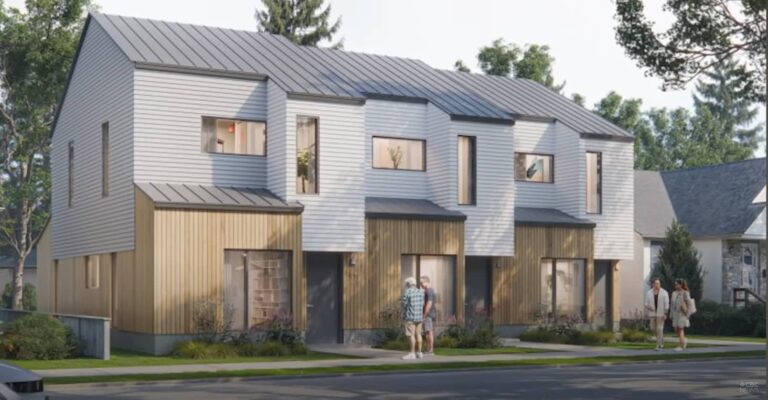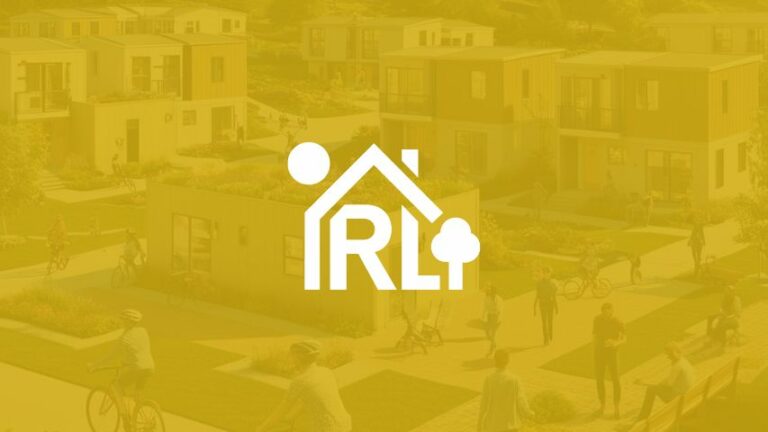
What does it take to shift the way we build—and think about—housing in Canada?
That was the central question in a recent CityTalk Canada discussion that tackled everything from zoning reform to collective living. Rather than just echoing frustration with high interest rates or red tape, the panel explored what’s already working—and what needs to change to support a more inclusive, affordable housing system.
At the heart of the conversation was a shared urgency: we need to do more than build faster—we need to build smarter, more equitably, and with more diversity in housing types. For ResponsibleLiving Communities and our partners in Squamish real estate and across the Sea to Sky region, these insights align with our mission to develop thoughtful, sustainable homes that meet real community needs.
Empowerment Is Just as Important as Policy
Many homeowners want to help address the housing crisis—but the path to becoming a small-scale developer often feels out of reach. Confusing processes and unfamiliar terms make the system feel closed off. But education and empowerment can change that. When people understand what’s possible—like adding a secondary suite or redeveloping an underused lot—they’re more likely to take action.
This kind of bottom-up innovation is key to ResponsibleLiving Communities’ coliving model, which emphasizes adaptive reuse and smaller-scale density that fits seamlessly into existing neighborhoods. In places like Squamish, empowering residents to participate in housing solutions will be critical to long-term affordability.
Regulations Should Enable Creativity, Not Shut It Down
Outdated building codes and fragmented municipal rules are stifling innovation across the country. Developers and planners often run into restrictive zoning, expensive development charges, and inconsistent requirements that make even simple, low-rise multi-unit projects difficult to deliver.
One specific barrier is the prohibition on single-egress stair designs, which are common in Europe and have been proven safe when paired with the right safety features. Reforming these codes could help unlock more flexible, affordable housing typologies that ResponsibleLiving Communities supports in its design and planning principles.
It’s Time to Fill the “Missing Middle”
The conversation returned often to one of Canada’s biggest blind spots: the “missing middle.” These are housing types that sit between single-family homes and high-rise towers—like duplexes, triplexes, and small apartment buildings. They are ideal for families, downsizers, and first-time buyers, but are often impossible to build under existing zoning.
This is a core focus of ResponsibleLiving Communities, which creates mid-density housing like co-living homes with 6–7 private suites and shared amenities. These designs are not only more cost-effective but also foster social connection—a defining principle of our approach to community-focused development in Squamish real estate.
Affordability Is a Design Challenge, Too
Affordability isn’t just about land costs or government subsidies—it’s also about how we design. Modular construction, compact footprints, and shared amenities can make homes more livable and reduce building costs.
For ResponsibleLiving Communities, this means prioritizing smart, human-centered design that includes:
- Flexible layouts for changing household types
- Integrated accessibility for all ages and abilities
- Thoughtful use of materials and passive energy systems
Affordable housing doesn’t have to be bare-bones; it has to be functional, inclusive, and built for longevity.
We Need to Reconsider Collective Living
Co-living was another central theme in the discussion. Popular around the world, this model allows unrelated individuals to share kitchens, bathrooms, and outdoor spaces. It provides affordability, flexibility, and community—but in much of Canada, it faces barriers from outdated occupancy laws.
ResponsibleLiving Communities is actively redefining co-living for the Sea to Sky region. With professionally managed, small-scale homes, we create shared living environments that emphasize privacy, dignity, and long-term affordability. Policy reform in this area could unlock thousands of new housing units that are well-suited to students, service workers, newcomers, and seniors.
Beyond Buildings: A Shift in Mindset
Housing isn’t just a commodity—it’s the foundation of a healthy, inclusive society. That mindset shift is crucial. As long as we treat housing as an investment first and a home second, we’ll continue to fall short on affordability, equity, and sustainability.
For ResponsibleLiving Communities, this means thinking beyond square footage. We ask:
- How does this project support social connection?
- How does it reduce resource consumption?
- How does it serve a mix of incomes and lifestyles?
Change Starts at the Local Level
The CityTalk panel made one thing clear: the housing crisis won’t be solved by one big policy change. It will take many smaller ones—coordinated, flexible, and rooted in local action.
Whether it’s enabling fourplexes, updating fire codes, promoting co-living, or giving homeowners tools to become part of the solution, we need to rethink what’s possible.
ResponsibleLiving Communities is committed to being part of that shift—in Squamish real estate, across Sea to Sky, and throughout British Columbia. Join us as we build not just housing, but healthy, resilient communities for the long term.



